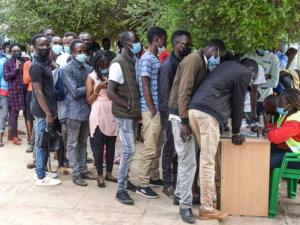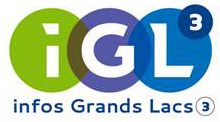
Polls body on the spot as Kenyans prepare for region’s ‘most expensive’ election
Kenyans will head to another General Election this August amid worries of paying more to elect their representatives at a time the economy is tanking and the cost of living is rising.
It is a reality that Kenyans are getting reluctantly accustomed to as the cost of democracy, but which will now rank the nation as the most expensive to campaign for a political seat in Africa.
At Ksh44.6 billion ($390 million), Kenya’s registered 22.15 million voters will each cost the government Ksh2,013 ($17.41) to vote, far more than Rwanda, for example, which spends just over $1 per voter. Ghana, comparative data from the electoral budgets shows, has spent about $12 per voter in its recent elections.
Kenya’s 2022/23 budget shows that the Independent Electoral and Boundaries Commission (IEBC), the electoral management body, has been given Ksh21.7 billion ($190 million) in addition to the Ksh22.9 billion ($200 million) in the current financial year, as most of the programmes – including voter registration, boundaries review and other preparatory work – are tied to the same election.
There are worries that the government could be forced to overlook priority areas and divert resources to finance the elections. In 2017, the Treasury did exactly that as the country went through a repeat election after the Supreme Court nullified the presidential election results. In that year, the budgetary allocation was $499 million: $333 million to the IEBC and related security expenditure of $166 million to cover the voting in more than 40,000 polling stations and 19.6 million registered voters, as well as for other agencies like the courts and the Registrar of Political Parties. It made Kenya’s election at the time the second-most expensive in the world, after Papua New Guinea, whose treacherous roads and remote locations often add to the cost.
In Kenya, the cost has been rising every election cycle. In 2013, the country spent $260 million to run the polls, the first under the devolved system of government, in which voters elected six representatives, including the president. That was nearly 25 percent more than the cost of the infamous 2007 elections.
Authorities attribute the rise partly to lack of infrastructure – poor network coverage for a quarter of the gazetted 53,300 polling stations, poor roads – and nomadic voters especially in the northern region. But procurement rules as well as mistrust may contribute. The IEBC has been forced to procure materials abroad every election season, overlooking local printers.
Prof Karuti Kanyinga of the University of Nairobi argues that the lack of trust in independent institutions is what has resulted in expensive elections.
“Democracy is not cheap because we have to ask ourselves: Are we looking for money or quality leadership? What is the cost of democracy? Do you want collapsed institutions? Do you want civil war?” he said.
“The reason why our elections are expensive is lack of trust. We do not trust one another, therefore, we end up with very expensive processes,” Prof Kanyinga told The EastAfrican.
He, however, observed that the amount of money IEBC spends in an election should not be used to determine whether the election is expensive, as corruption causes the loss of a lot of public funds.
Based on data from countries’ electoral bodies, Kenya’s election seems the costliest in Africa: three times more than Angola’s budget for 2017, for example. In Rwanda, the budget in the last election was $6.9 million for its estimated seven million voters, translating into about $1.5 per voter. In 2021, Uganda spent $4 per voter while Tanzania spent $5.16 per voter in 2015.
Least expensive example
Ghana’s election last year, at $0.07 per voter, appears to be the least expensive in Africa against a global benchmark of $5 per voter. Nigeria, the most populous country in Africa, will spent about $13 per voter.
A key cost Kenya’s electoral team has catered for is its proposed increase of polling stations from the 40,883 in 2017 to 53,300 in the August polls. Kenyan laws bar the IEBC from having more than 700 voters in a polling station, with this limitation even more pronounced in terms of cost where voters are scattered or always on the move, in the case of pastoralist communities.
President Uhuru Kenyatta’s ruling party, Jubilee, thinks the electoral agency is not doing enough to cut costs. Jubilee Party Secretary-General Jeremiah Kioni told The EastAfrican that “for an election to be credible, it has to cost a lot of money.”
“The IEBC continues to increase the budget instead of reducing it and they should invest in trust more than in the cost of paper,” said Makueni Senator Mutula Kilonzo Jnr, vice chairman of the Wiper party, a member of the Raila Odinga-led Azimio la Umoja One Kenya coalition.
Mr Kilonzo said that the cost of elections is promoting “tenderpreneurship” — corruption in procurement of tenders in the public sector.
“Kenya has one of the most expensive elections in the world for no good reason other than promoting tenderpreneurship. We procure machines all the time. The Legal Affairs Committee at the Senate queried the cost since last election,” said Mr Kilonzo.
He cited the 2013 and 2017 polls when the elections body abandoned key equipment for a new system that has been changed again ahead of the August polls.
In 2013, Kenya spent Ksh4.6 billion ($39.8 million) on 15,000 biometric voter registration (BVR) kits and another Ksh1.7 billion ($14.7 million) on 34,000 electronic voter identification devices (Evids). It also bought a results transmission system (RTS) at Ksh638 million ($5.5 million), in addition to mobile phones, modems, Sim cards, projectors and other materials.
Discarded equipment
And, while the BVR system was used in voter registration in 2017, the commission discarded the Evids, RTS and BVR on election day, choosing a new technology — the Kenya Integrated Elections Management Systems (Kiems) — to identify voters, results transmission and candidates’ registration management system.
The commission in 2017 procured 45,000 of the kits at Ksh2.4 billion ($20.7 million) from French firm OT-Morpho. Out of its total budget in the 2017 polls, the IEBC used Ksh5.5 billion ($47.5 million) as capital investments on the purchase of technological devices and equipment. It has since discarded the 2017 technology and handed a Ksh3 billion ($25.9 million) tender for the printing and supply of ballot papers to Greek company Inform P Lykos.
The agency has also handed the Ksh4 billion ($34.6 million) elections technology tender to Dutch firm Smartmatic, to supply, deliver, install, test, commission, support and maintain the kits.
Murang’a senator Irungu Kang’ata, a member of the Deputy President William Ruto-led United Democratic Alliance (UDA), says Kenya should cut the cost of elections.
“The cost of elections in Kenya is way above global average. A young party like UDA held national nominations that largely mirrored national elections at a minimal cost. The IEBC should emulate UDA and save costs,” Mr Kang’ata said.
Though UDA did not publicly state how much they used for the nominations, the money it collected from more than the 5,000 aspirants set the figure at just above Ksh350 million ($3 million).
Elections in Kenya cost both the voter and the contender. In an earlier study on the 2017 elections, Prof Kanyinga and Maseno University political science lecturer Tom Odhiambo found that on average, a member of the National Assembly spent Ksh18.2 million ($157,439), while those going for Senate spent an average of Ksh35 million ($302,768).
Women, the two scholars found, spent a little more, at an average of Ksh23.6 million ($204,152).
Another study in 2021 published by the Netherlands Institute of Multiparty Democracy shows that aspirants who won in 2017 spent more than a year’s salary, plus allowances, during the campaign period.
The research also revealed that candidates who spent more were more likely to win, especially if they ran on a “dominant” party in their respective regions. This, the report says, may jeopardise the function of the representative, but the lucrative nature of these seats means the cost of campaigns will always go up.
The IEBC estimates that a presidential candidate will spend as much at least Ksh4 billion ($34.6 million) in a campaign, with political parties—with candidates in the six elective seats—spending as much as Ksh15 billion ($129.7 million). Governor, woman representative and senator hopefuls, the commission’s calculations showed, spend between Ksh21.9 million ($189,446) and Ksh117.3 million ($1 million), depending on the size and population of the counties in which they seek the elective seat.
The commission had capped the rates, saying no candidate should spend beyond their maximum limits in each category. Members of Parliament, however, shot down these calculations and the spending limits that would have come with them. But a bid by the legislators to bar the Auditor-General from scrutinising spending by parties was this week quashed by the courts.
“It is possible to reduce the amount of money a politician spends depending on the time one starts campaigns,” said Mr Kioni.
University of Nairobi’s lecturer Prof Winnie Mitullah said the electoral commission should limit the campaign period.
“I am wondering if the electoral commission will ever declare the campaign timeline because campaigns are going on, making it expensive. An ordinary person cannot afford it,” she said.
https://www.theeastafrican.co.ke/tea/news/east-africa/polls-body-on-the-...
